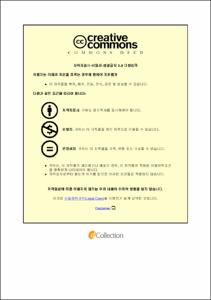Relation between nutrition intake and 28-day mortality using modified NUTRIC score in patients with sepsis
- Abstract
- Background & Aim: Appropriate nutrition intake is important for the outcome of critically ill patients. The NUTRIC (NUTrition RIsk in Critically ill) score and modified NUTRIC score are intensive care unit (ICU)-specific nutrition risk assessment tools that have been validated in many studies. The present study compared the accuracy of the NUTRIC score with the modified NUTRIC score for predicting 28-day mortality and investigated the relation between nutritional support and 28-day mortality using the modified NUTRIC score in patients with sepsis.
Methods: This was a retrospective cohort study in the medical ICU of a tertiary referral hospital. We included patients with sepsis admitted to Asan Medical Center between January 2011 and June 2017 who were at least 18 years old and stayed for more than 24 hours in the ICU. The NUTRIC or modified NUTRIC score was calculated using data within 24 hours of admission to the ICU. Nutritional support was categorized into <20, 20 to <25, and ≥25 kcal/kg energy intake and <0.8, 0.8 to <1.2, and ≥1.2 g/kg protein intake at day 7 after ICU admission. Multivariable logistic regression analysis was used for 28-day mortality as outcome.
Results: A total of 482 patients were analyzed. The area under the curve (AUC) of the NUTRIC score and modified NUTRIC score for predicting 28-day mortality was 0.762 (95% confidence interval [CI] 0.718–0.806) and 0.757 (95% CI 0.713–0.801), respectively. There was no significant difference between the two scores (P=0.45). In the group with high (≥5) modified NUTRIC scores, higher energy intake was significantly associated with lower mortality (20 to <25 kcal/kg: adjusted odds ratio [aOR] 0.373, 95% CI 0.169–0.740; ≥25 kcal/kg: aOR 0.367, 95% CI 0.182–0.740). Higher protein intake was significantly associated with lower mortality (0.8 to <1.2 g/kg: aOR 0.364, 95% CI 0.191–0.693; ≥1.2 g/kg: aOR 0.362, 95% CI 0.150–0.871). In patients with a low modified NUTRIC score (<5), higher energy intake (20 to <25 kcal/kg: aOR 0.185, 95% CI 0.046–0.744; ≥25 kcal/kg: aOR 0.111, 95% CI 0.032–0.384) and higher protein intake (0.8 to <1.2 g/kg: aOR 0.128, 95% CI 0.040–0.407; ≥1.2 g/kg: aOR 0.109, 95% CI 0.021–0.582) were significantly associated with lower mortality.
Conclusions: The modified NUTRIC score was a good nutritional risk assessment tool for critically ill septic patients. High (≥5) modified NUTRIC scores were associated with high mortality. Adequate nutrition intake in the first week after ICU admission may improve 28-day mortality in patients with both high and low modified NUTRIC scores.
- Issued Date
- 2017
- Awarded Date
- 2018-02
- Type
- Dissertation
- Keyword
- nutrition; modified NUTRIC score; septic patients
- Alternative Author(s)
- Dae Hyun Jeong
- Affiliation
- 울산대학교
- Department
- 일반대학원 의학과
- Advisor
- 허진원
- Degree
- Master
- Publisher
- 울산대학교 일반대학원 의학과
- Language
- eng
- Rights
- 울산대학교 논문은 저작권에 의해 보호받습니다.
- Appears in Collections:
- Medicine > 1. Theses (Master)
- 파일 목록
-
-
Download
 200000003515.pdf
기타 데이터 / 393.67 kB / Adobe PDF
200000003515.pdf
기타 데이터 / 393.67 kB / Adobe PDF
-
Items in Repository are protected by copyright, with all rights reserved, unless otherwise indicated.